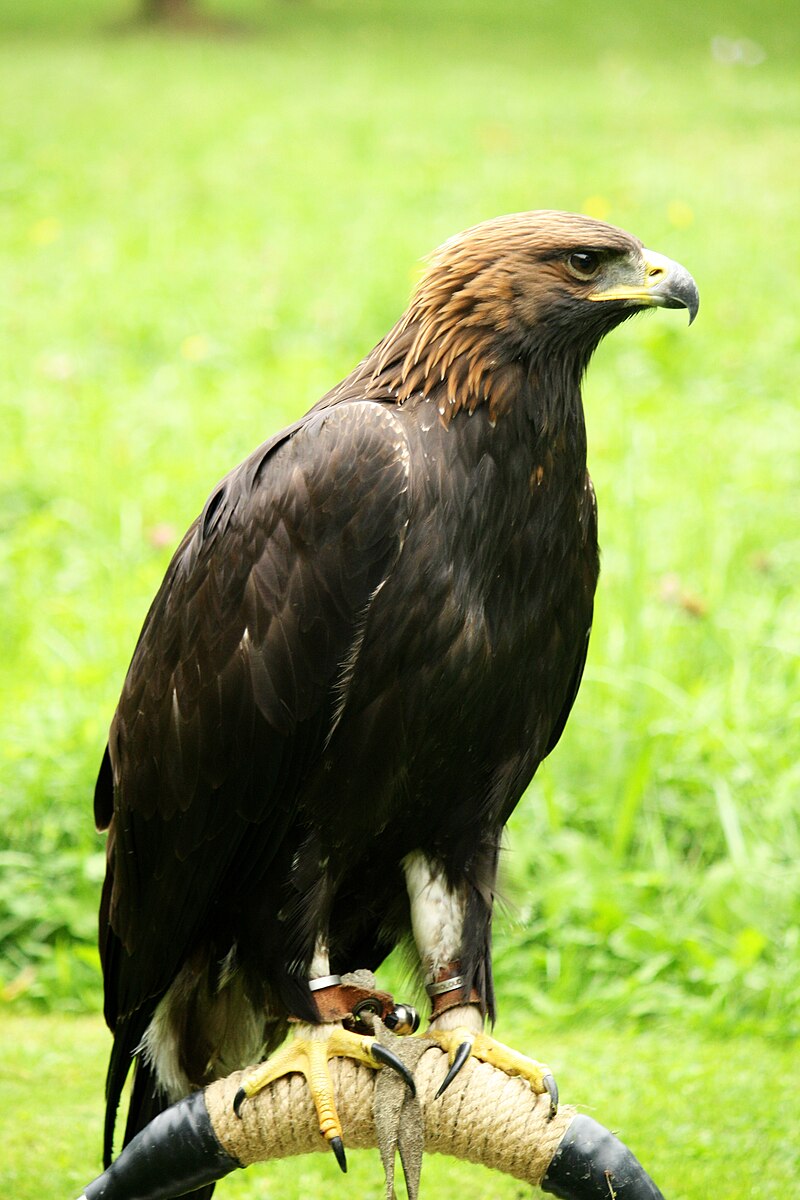Golden Eagles are majestic birds of prey known for their impressive size, strength, and hunting prowess. One of the most fascinating aspects of these raptors is their nesting and breeding behavior, particularly the number of eggs they lay at a time. In this comprehensive blog post, we’ll delve into the details of Golden Eagle egg-laying and provide you with a wealth of information to satisfy your curiosity.
Golden Eagles Lay 1 to 3 Eggs at a Time
The majority of Golden Eagle nests contain 2 eggs, with a range of 1 to 3 eggs being the norm. These eggs are typically whitish to creamy white in color, with varying sizes of dots and blotches adorning the shell. The female Golden Eagle lays the first egg and then proceeds to lay another egg every other day until the clutch is complete.
Incubation and Hatching of Golden Eagle Eggs
 Źródło obrazu: Złoty Orzeł autorstwa Atillaka
Źródło obrazu: Złoty Orzeł autorstwa Atillaka
The incubation period for Golden Eagle eggs is approximately 42 days. During this time, the female does the majority of the incubation, while the male is responsible for bringing food and protecting the nest. The eggs hatch asynchronously, meaning the first egg laid will be the first to hatch, as it has been incubated for a longer period.
Caring for Golden Eagle Chicks
When the chicks hatch, they are covered in a fine layer of grayish-white down. The female broods the hatchlings, while the male brings food to the nest. For the first 20 days or so, only the female feeds the young directly with the food provided by the male. As the chicks grow, they become increasingly independent of their parents, reaching full independence around 75 to 85 days after fledging.
Nest Predators and Conservation Status
Golden Eagles have few land-based nest predators due to the inaccessibility of their nests. However, aerial predators such as gyrfalcons, Great Horned Owls, and Common Ravens can pose a threat to small eaglets left unattended. Breeding eagles fiercely defend their nests against any potential predators, even when they are far from the nest.
In terms of conservation, Golden Eagle populations have remained relatively stable between 1966 and 2019, according to the North American Breeding Bird Survey. The global breeding population is estimated to be around 130,000, and they are rated 10 out of 20 on the Continental Concern Score, indicating a species of low conservation concern. However, more than 70% of recorded Golden Eagle deaths are attributable to human impact, either intentional or inadvertent.
Preferencje siedliskowe i gniazdowe
Golden Eagles thrive in open and semi-open country featuring native vegetation across most of the Northern Hemisphere. They avoid developed areas and uninterrupted stretches of forest, preferring to nest in mountains up to 12,000 feet, canyonlands, rimrock terrain, and riverside cliffs and bluffs. Their nests are typically built on cliffs and steep escarpments in grassland, chaparral, shrubland, forest, and other vegetated areas.
In conclusion, the fascinating details of how many eggs Golden Eagles lay at a time, their incubation and hatching process, and the care of their chicks provide valuable insights into the remarkable breeding behavior of these majestic birds of prey. By understanding the unique aspects of Golden Eagle nesting, we can better appreciate the adaptations and strategies that have allowed these impressive raptors to thrive in their natural habitats.
Referencje:
- Golden Eagle Life History, All About Birds, Cornell Lab of Ornithology, https://www.allaboutbirds.org/guide/Golden_Eagle/lifehistory
- All About Nesting Golden Eagles – Avian Report, https://avianreport.com/golden-eagle-breeding/
- Golden Eagle Fact Sheet | Blog | Nature – PBS, https://www.pbs.org/wnet/nature/blog/golden-eagle-fact-sheet/
- Golden eagle – Wikipedia, https://en.wikipedia.org/wiki/Golden_eagle



